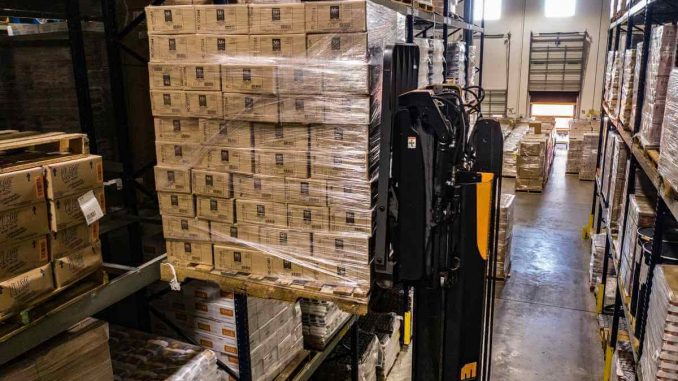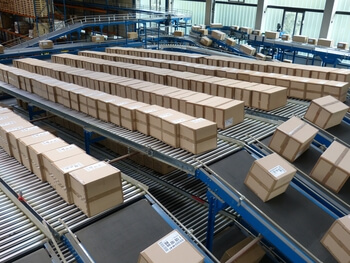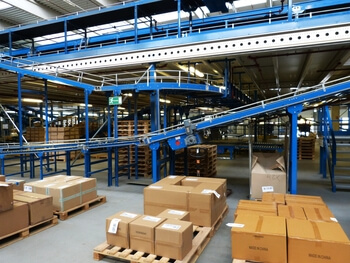
In the complex world of supply chain management, warehousing and storage play crucial roles. These elements ensure that goods are stored safely and are readily available when needed, thus maintaining the flow of products from manufacturers to end consumers. Understanding the intricacies of warehousing and storage is essential for businesses looking to optimize their operations and improve their overall efficiency.
What is Warehousing?
Warehousing refers to the process of storing goods that will be sold or distributed later. Warehouses are large buildings where manufacturers, wholesalers, retailers, and importers store their products. These facilities are designed to accommodate large quantities of goods and are equipped with various systems and technologies to manage inventory efficiently.
Types of Warehousing
- Public Warehousing
- Description: Public warehouses are operated by third-party logistics providers and are available for use by multiple customers. They offer flexible storage solutions without long-term commitments.
- Advantages: Cost-effective, flexible storage options, professional management.
- Disadvantages: Less control over storage conditions, potential for higher costs over time.
- Private Warehousing

- Description: Private warehouses are owned and operated by businesses to store their own goods. They are typically used by companies with large volumes of inventory.
- Advantages: Complete control over storage conditions, tailored to specific needs.
- Disadvantages: High initial investment, less flexibility.
- Bonded Warehousing
- Description: Bonded warehouses are licensed by the government to store imported goods before customs duties are paid. They are ideal for businesses involved in international trade.
- Advantages: Deferred payment of customs duties, secure storage for imported goods.
- Disadvantages: Strict regulatory compliance, potential for high costs.
- Smart Warehousing
- Description: Smart warehouses leverage advanced technologies such as automation, IoT, and AI to optimize storage and distribution processes. They offer real-time inventory tracking and efficient management.
- Advantages: Increased efficiency, reduced human error, real-time data analytics.
- Disadvantages: High initial setup costs, need for skilled personnel.
Importance of Warehousing
Warehousing is a vital component of supply chain management for several reasons:
- Inventory Management
- Effective warehousing helps in maintaining optimal inventory levels, reducing the risk of stockouts or overstocking. It ensures that products are available when needed, thus enhancing customer satisfaction.
- Order Fulfillment
- Warehouses play a crucial role in the order fulfillment process. They ensure that products are picked, packed, and shipped accurately and efficiently, leading to timely delivery.
- Cost Efficiency
- Proper warehousing reduces transportation costs by storing products closer to the end customer. It also minimizes handling costs through efficient storage and retrieval systems.
- Risk Management
- Warehouses provide a secure environment for storing goods, protecting them from theft, damage, and other risks. This ensures the safety and integrity of the products.
What is Storage?
Storage refers to the process of keeping goods in a specific location until they are needed. While warehousing involves the broader concept of managing and operating a facility for storage, storage itself focuses on the methods and systems used to keep products safe and organized.
Types of Storage Systems
- Pallet Racking
- Description: Pallet racking is a storage system designed to hold large quantities of palletized goods. It is commonly used in warehouses to maximize vertical space.
- Advantages: Efficient use of space, easy access to goods, scalable.
- Disadvantages: Requires forklifts for access, potential for damage to racks and goods.
- Shelving
- Description: Shelving units are used to store smaller items that do not require palletization. They are ideal for organizing products in a systematic manner.
- Advantages: Easy access to goods, flexible configurations, cost-effective.
- Disadvantages: Limited to smaller items, lower weight capacity.
- Mezzanine Flooring
- Description: Mezzanine floors are elevated platforms installed within a warehouse to create additional storage space. They are useful for maximizing the available vertical space.
- Advantages: Increased storage capacity, efficient use of space, customizable.
- Disadvantages: High initial investment, potential for structural challenges.
- Automated Storage and Retrieval Systems (AS/RS)
- Description: AS/RS are advanced systems that use automated technology to store and retrieve goods. They are commonly used in smart warehouses.
- Advantages: High efficiency, reduced labor costs, improved accuracy.
- Disadvantages: Expensive setup, need for specialized maintenance.
Importance of Storage
Effective storage is crucial for the smooth operation of any warehouse. Here’s why:
- Space Optimization
- Proper storage systems help in utilizing the available space efficiently, allowing for maximum storage capacity and minimizing wasted space.
- Product Accessibility
- Organized storage ensures that products can be accessed easily and quickly. This is essential for timely order fulfillment and efficient warehouse operations.
- Inventory Accuracy
- Efficient storage systems facilitate accurate inventory tracking and management. This reduces the risk of errors and ensures that inventory levels are maintained correctly.
- Safety
- Proper storage systems help in maintaining a safe working environment. They reduce the risk of accidents and ensure that goods are stored securely.
Combining Warehousing and Storage for Optimal Efficiency
To achieve optimal efficiency in supply chain management, businesses need to integrate warehousing and storage effectively. Here are some strategies to consider:
- Implement Technology
- Utilize advanced technologies such as warehouse management systems (WMS), automated storage and retrieval systems (AS/RS), and IoT devices to enhance warehousing and storage operations.
- Optimize Layout
- Design the warehouse layout to ensure smooth workflow and easy access to goods. This includes strategic placement of storage systems, aisles, and loading/unloading areas.
- Regular Audits
- Conduct regular audits of inventory and storage systems to identify and address any inefficiencies or discrepancies. This helps in maintaining accurate inventory levels and optimizing space utilization.
- Training and Development
- Invest in training and development programs for warehouse staff to ensure they are skilled in using storage systems and technologies effectively. This enhances productivity and reduces the risk of errors.
Conclusion
Warehousing and storage are fundamental components of efficient supply chain management. By understanding the different types of warehousing and storage systems, and implementing strategies to optimize their use, businesses can improve their operations, reduce costs, and enhance customer satisfaction. Whether you are a small business or a large enterprise, investing in effective warehousing and storage solutions is essential for long-term success.


Leave a Reply